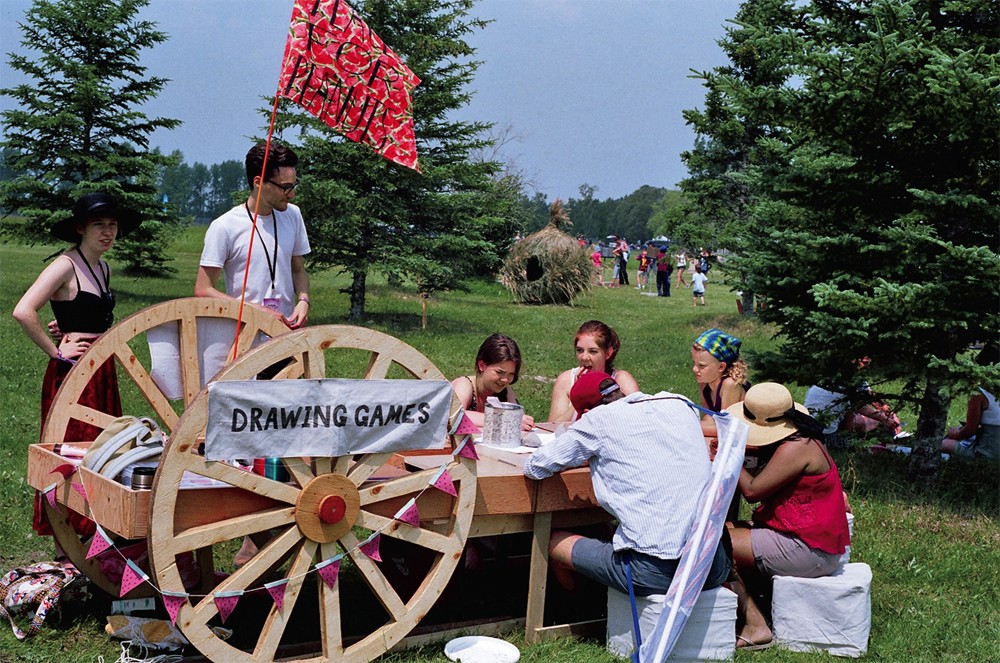Drawing on History
The Red River cart is a prairie icon with a history of maximum efficiency and minimum aesthetics. In the 1860s over three hundred of these big-wheeled carts, drawn by oxen, would leave the Red River Colony on an annual trip of 1,500 kilometres along the Carlton Trail, the main trading and transportation route across the Canadian Northwest. They carried fur and traded goods.
One hundred and fifty years later a single hand-built version of the cart was pulled by a single artist across the grassy fields of the 2014 Winnipeg Folk Festival. Called the Red River Cart d’Art, it carried five canvas-wrapped milk crates to use as seats, a generous supply of paper and drawing materials, and some weighty enthusiasm.
The Cart d’Art, a portable art studio, was the idea of Ted Barker and Toby Gillies, two core members of Places for Peanuts, a three year old drawing collective that now has a fluctuating membership of over 50. The other core members, who double as crew art cart facilitators, include Janessa Brunet and Matea Radic. The purpose of the collective was to create social situations in which art could be made. For two years Places for Peanuts met each week to play drawing games, exchange books and plan exhibitions and zines. The concept of the mobile studio was a logical step in a plan to take art to the people rather than have them come to it. “I know it sounds silly but essentially what we were trying to do was spread art and creativity,” says Gillies. “We felt we were pioneers going out in the spring,” Barker adds, “blazing trails.”

Red River Cart d’Art, 2014, at Winnipeg Folk Festival, July 2014. Photographs: Janessa Brunet.
The construction of the Cart d’Art was a modest proposal. Except for the axle, which is a steel plumbing pipe, and wood for the wheels, all the materials were scavenged from lumber in Barker’s yard. “We even cut up a plywood bed that belonged to my grandfather,” he says.
The cart was designed with a canopy so that it operates, if not as an all-terrain vehicle, at least as an all-weather one. The intention was to make the outside cart function as comfortably as does the inside studio. The activities in the cart are identical to the ones the collective practises in their weekly meetings. They play Exquisite Corpse, a game based on the folded covers of Mad magazine, and one called Drawing Telephone. “It’s one of our original games,” says Radic. “You start with a sentence or a word on a sheet of paper, you pass it on for a drawn interpretation, and then it is passed on again and again. You end up with a wonderful series of drawings.” Gillies agrees. “I think that some of our most successful drawings occur when we collaborate with people who don’t draw very much.”
Everything connected to the Cart d’Art stays consistent with the history of trade. If anyone who participates in a session wants to take a drawing home, they have to leave one in exchange. The members of Places for Peanuts think of that trade as both fair and fare. Just like the original, their Cart d’Art remains efficient and artful. ❚

